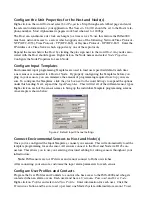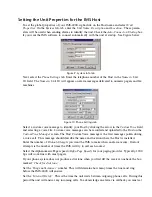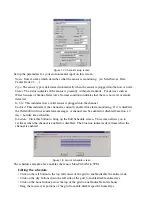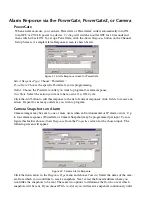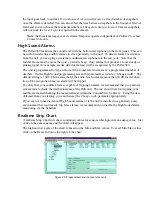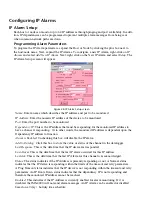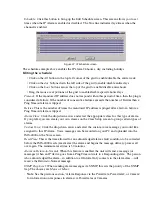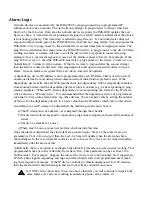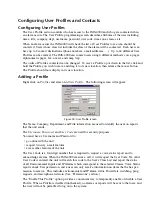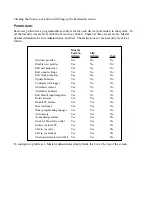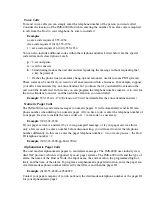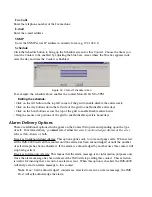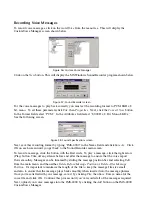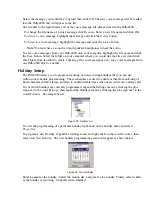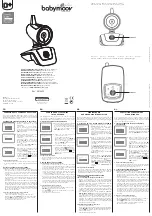
Environmental Input Alarm Logic
Each environmental input will automatically detect the type of sensor connected (temperature,
humidity, power, motion...). Analog sensors will include high and low alarm limit programming
options while two-state sensors (Normal/Alarm) will simply have a recognition time. In order for
an alarm to be dispatched, the sensor must meet the following criteria:
a) It must be Enabled—as configured through the schedule.
b) It must have exceeded the programmed high or limit, continuously, for the duration of the
wait (recognition) time. For two-state sensors it must be in the Alarm state, continuously, for
the duration of the wait (recognition) time.
c) It must be a member of a Class.
d) There must be one or more User Profiles which include this Class.
Once the alarm is dispatched, the alarm delivery process begins. (See
Alarm Delivery and
Acknowledgment
for details.)
Additionally, there is an option to re-trigger the alarm if it remains beyond the High/Low limits (or
in an alarm state) too long. This programmable time period is called the Alarm Reset Time. This
parameter can be set from 30 to 3600 minutes.
DO NOT set the Alarm Reset Time too short, otherwise you will continue to dispatch the
same alarm over and over resulting in numerous phone calls.
Trouble Alarms
The IMS-4000 monitors the presence of all connected sensors to insure the reliability of the system.
When a sensor is removed from a Host or Node for more than a minute, a trouble alarm is gener-
ated. All trouble alarms are a part of the Diagnostic class, so any User who wishes to receive sen-
sor Trouble Alarm, System Diagnostic or Fault Alarms can do so by including the Diagnostic class
in their user Class List.
Removing/Changing a Sensor
Since the Host and Node monitor the presence of sensors, you must be careful when removing them
to prevent a trouble alarm from occurring. The following procedure is recommended:
a) Disable the sensor you wish to change/remove by clearing its schedule.
b) Disconnect the sensor from the Host or Node.
c) Login to the Host or Node and expand the Environmentals to display all of the inputs. Right
click on the sensor to be removed and select Delete.
A new sensor can now be connected to the empty channel.
Special Notes
To reset a Smoke detector alarm, you must momentarily disconnect it from the Host or Node, and
then reconnect it. This will silence the alarm and return it to normal operating condition.
Configuring Templates
Environmental input programming
Templates
are used to load user-specified defaults each time a
new sensor is connected to a Host or Node. By properly configuring the Templates before you plug
in your sensors, you can minimize the amount of programming required to set up your sensors. To
IMS-4000 Manual
54
Содержание Sensaphone IMS-4000
Страница 1: ...IMS 4000 User s Manual Version 2 4 8 PHONETICS INC SENSAPHONE ...
Страница 44: ......
Страница 59: ......
Страница 60: ......
Страница 102: ......
Страница 106: ...IMS 4000 Manual 106 ...
Страница 135: ...Chapter 7 IMS 4000 Sensors 135 ...
Страница 146: ...IMS 4000 Manual 146 ...
Страница 148: ...IMS 4000 Manual 148 ...
Страница 158: ...IMS 4000 Manual 158 ...
Страница 159: ...159 ...
Страница 160: ...IMS 4000 Host Installation Manual 160 ...

